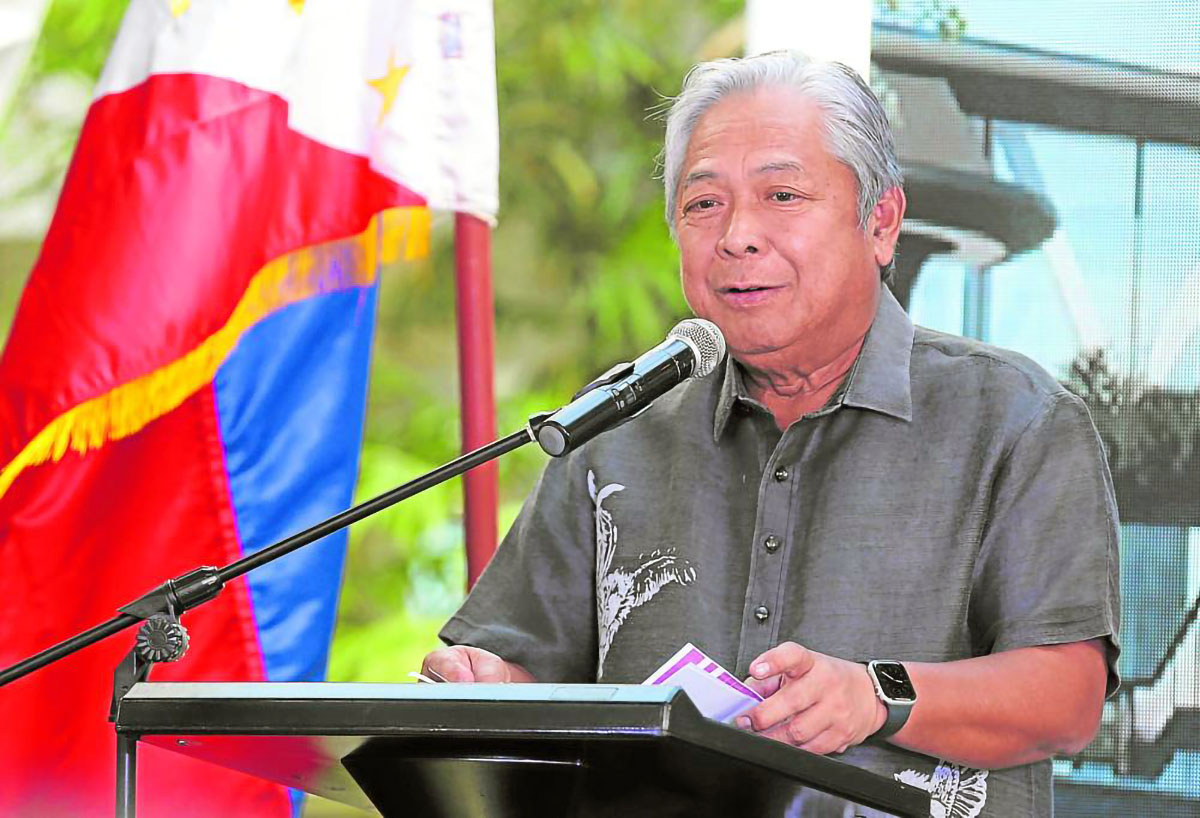
Transportation Secretary Jaime Bautista —INQUIRER PHOTO
Stakeholders in the country’s aviation industry have appealed to the Department of Transportation (DOTr) to stop the looming increase in landing and takeoff fees and other charges that they claim would make the soon-to-be privatized Ninoy Aquino International Airport (Naia) the most expensive airport in Asia.
In a recent letter to Transportation Secretary Jaime Bautista, the Air Carriers Association of the Philippines, the Board of Airline Representatives and the Airline Operators Council said they “view with grave concern the impending gargantuan increase of fees and charges coinciding with the recently awarded privatization of the Naia.”
READ: DOTr’s Bautista: No Naia terminal fee hike until ‘notable’ upgrades
In February, the SMC-SAP & Co. Consortium, now called the New Naia Infra Corp. (NNIC), was awarded the P170.6-billion public-private partnership contract to rehabilitate, modernize, and operate Naia for 15 to 25 years. The concession agreement was signed the following month, setting the takeover of the consortium on Sept. 14.
The consortium is composed of San Miguel Holdings Corp., RMM Asian Logistics Inc., RLW Aviation Development Inc., and Incheon International Airport Corp.
Ahead of the takeover, the Manila International Airport Authority (MIAA), which regulates the country’s primary local and international gateway, issued also in February a notice of public hearing and consultation on the proposed increase in fees and charges on the use of its services, facilities, and equipment.
Almost double
Earlier reports said that based on the proposed MIAA fees, the passenger service charge for local travelers will almost double to P390 from P200 in the first year under the consortium. The service charge for international travelers, on the other hand, will surge by 73 percent to P950 from P550.
The passenger fees as well as the proposed increases in aeronautical and other charges were deemed by aviation groups as unreasonable and unaffordable.
They warned that Naia’s proposed landing and takeoff fees charged to the airlines would be double that of Singapore’s Changi Airport and more than triple that of other Southeast Asian airports.
READ: Naia may be privatized by Q1 of 2024
The increases are reportedly about $2,000 more than those collected at the Tokyo-Narita airport, which is generally considered one of the most expensive in Asia.
MIAA earlier posted the proposed revised schedule of fees on its official website, but it has since been inaccessible for still undisclosed reasons.
There must be a match
In a separate letter to Bautista sent this week, the groups said data supplied to the government by its transaction adviser, the Asian Development Bank, as bases for the rate increases were misleading and flawed.
They said “[t]he consumers will accept higher travel fees and charges if they are matched with tangible improvements in airport capacity and user experience. In short, airport redevelopment and construction should align with capacity grown and these plans should have agreed delivery milestones.”
The groups said, however, that there would be no noticeable benefit or change in the airport experience in the next two to three years. Even then, the increase in the fees will already be reflected in higher prices of airline tickets as these added costs will be passed on to the passengers.
Among world’s worst
The government entered into a contract to rehabilitate and modernize the country’s gateway to raise it to international standards and hopefully get rid of its reputation for being among the world’s worst.
The goal is to increase the passenger capacity of all terminals to 60 million from the current 32 million a year.
To do this, the DOTr said the consortium will, among others, install electronic flight strip systems, which is part of the plan to modernize the communications, navigation, and surveillance systems for air traffic management; an automated weather observation system and automated terminal information system.
With these, air traffic movement at Naia will be increased from 40 movements—landings and takeoffs—to 48 an hour, thus reducing congestion.
The apron control operation of the four terminals will also be integrated into a single digital remote tower facility. Plans are also in place to refurbish one of the control towers as a backup control tower.
Enhancements
Several enhancements in passenger comfort and convenience include the repair or replacement of the passenger boarding bridges; upgrade or replacement of the baggage handling system; improvement in interterminal passenger and baggage transfer and construction of new surface access and airside roads.
NNIC also plans to expand two of the four passenger terminals. The north wing of Terminal 2 will be expanded toward the Philippine Village Hotel and Nayong Pilipino area while the south wing will be extended toward Terminal 1 after the international cargo complex and fuel farm are relocated.